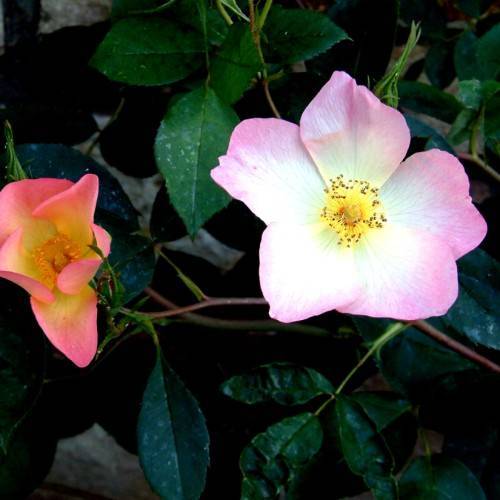
shrub rose
Rosa 'Ausday' THE ALEXANDRA ROSE
Cycle:
Perennial
Watering:
Average
Hardiness Zone:
5 - 9
Flowers:
Flowers
Sun:
Full sun
Leaf:
Yes
Growth Rate:
Low
Maintenance:
Moderate
Drought Tolerant:
Yes
Thorny:
Yes
Care Level:
Medium
watering
Shrub roses should be watered at least once a week and preferably more often, especially when the soil is dry or temperatures are high. A good soaking once a week should be enough, however, if temperatures are really high, then water twice a week with a deep soaking. Make sure not to water too frequently, as wet roots can cause the rose to become diseased. This species should be watered in the morning so that the leaves will have time to dry in the sun before nightfall, which will help prevent fungal diseases.
sunlight
Shrub roses, such as Rosa 'Ausday' The Alexandra Rose, require full sun for optimal flowering. These roses should be planted in an area that receives 6 to 8 hours of direct sunlight each day. The best time of day for these roses to receive sunlight is in the morning, as the sun is not as hot and the plants have the entire day to dry out afterwards. Too much afternoon and evening sun in hot climates can cause the leaves to sunburn. Additionally, afternoon sun may also be too hot and cause growth stress to the plant, resulting in low flowering or no flowering.
pruning
The shrub rose (Rosa 'Ausday' The Alexandra Rose) is typically a low to medium-level growing shrub with attractive rich-green foliage and fragrant pink or white flowers. Pruning requirements for this plant species include light annual pruning in the late winter or early spring before the plant begins to produce new growth. For young plants, prune back 1 third to 1 half of their shoots to promote branching and a full, dense growth habit. Established shrub roses can be pruned back by a third to 1 half each year, after their flowers have faded. To maintain the natural shape and enhance the fragrant blooms, careful deadheading and shape pruning should be carried out as needed during the growing season.
